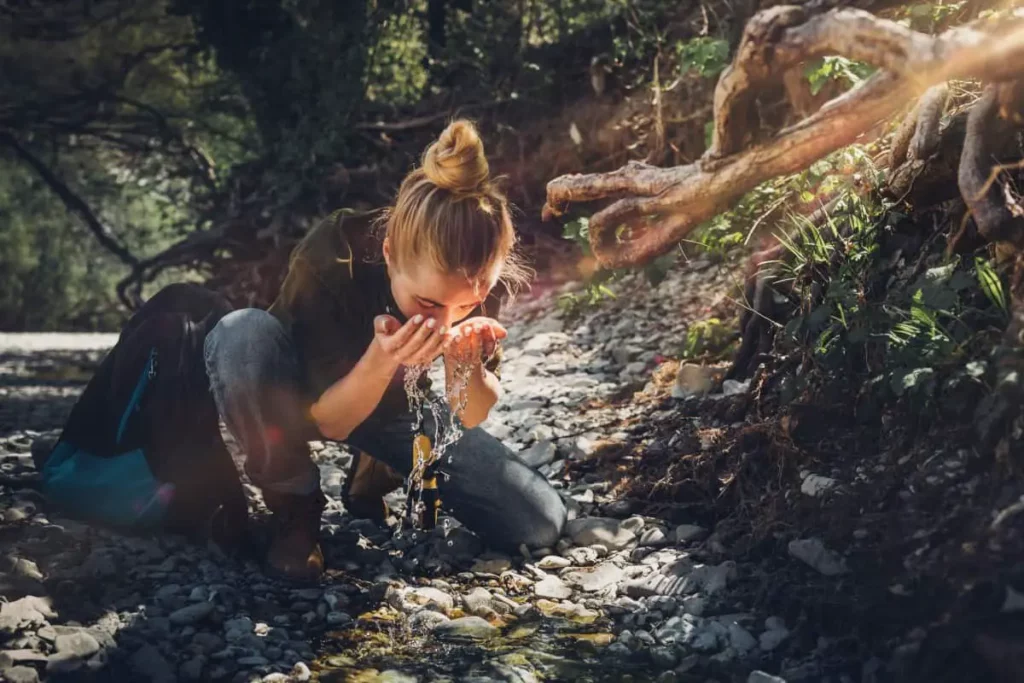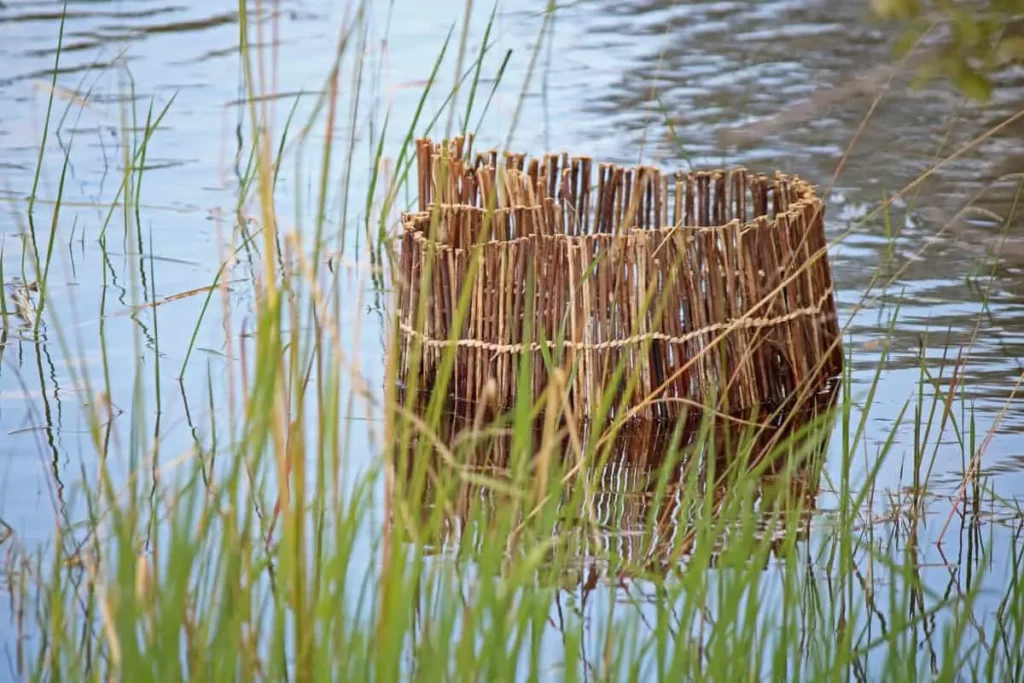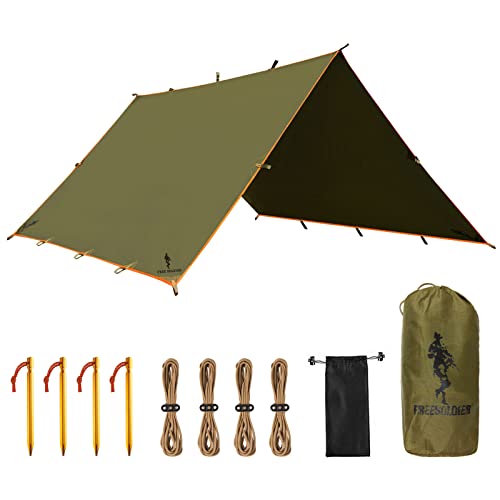This post contains affiliate links.
Not all camping is the same. It’s a whole different game when you find yourself in the middle of nowhere with nothing but your skills and minimal gear to survive. Survivalist camping is the most intense camping experience you can go through, so I’m here to help you master it.
Survivalist camping involves walking into or being dropped off in unknown territory with very limited resources to use for surviving. It is for people looking to put their skills and abilities, both physically and mentally, to the ultimate test.
You shouldn’t try this type of camping unless you’ve had extensive training in dealing with any problem out in the wilderness and mastered all the needed camping techniques and first aid knowledge.
Survivalist camping is definitely extreme, but it’s also incredibly rewarding. Keep reading to find out more about the types of survival camping and the crucial skills required to keep you alive out there.

Table of Contents
What is Survivalist Camping?
If you want to have a taste of what it’s like to live with the very basics and use whatever resources you can find to survive, away from the convenience of modern luxuries and the confines of closed walls, then you may want to consider survivalist camping.
This is the most brutal type of camping, and as I said above, it requires having a rather advanced level of survival skills. It’s not to be taken lightly, and it’s surely not for the weak-minded.
There are two types of survivalist camping – base camp survival camping and walk-out survival camping. Their means are different, but they share the same goal: staying alive. Here’s a breakdown of each type:
Base Camp Survival
In this camping style, you’re supposed to find an isolated spot where you’re all alone. Better yet, if it’s an unknown area then set up your tent there and spend a certain amount of time at that place.
During your stay, you’ll have to rely on your survival skills to do everything, including catching your own food whether by fishing, hunting, or scavenging for anything edible. You’ll need to be very careful not to disturb or attract other wild animals that could potentially hurt you.
Walk Out Survival
Walk-out survival camping is by far the most difficult type of camping where you’ll be dropped off at some spot in the wilderness, and the mission is to find your way back to the civilization. You’ll have to come up with ways to locate food and water every day, which is even more challenging since it’s another unknown territory each day.
Survival camping is all about planning and being prepared. You’ll have to plan every single detail, no matter how small it is. You’ll also have to write down all of your journey’s information and hand it over to your emergency contact before you even start the trip.
- KEY FEATURES: This Magnetic Compass consists of Acrylic Baseplate with Azimuth bearing and 360 degree rotating bezel. With the help of a...
- PORTABLE & LIGHTWEIGHT: This Baseplate compass is an essential piece of survival gear to have in your pocket or hiking backpack. Both...
- PROFESSIONAL, ADVANCE COMPASS NAVIGATION: Basic orienteering compass is constructed for accurate directions and making it an ideal...
Preparation is Essential
I can’t stress this enough, but if you’re new to the camping scene, don’t try survivalist camping. Just stick to less intense types of camping (such as tent camping, RV camping, or hiking and backpacking) until you’ve had enough time to practice and master all the necessary skills.
Even if you’re an experienced camper but not entirely confident that you’re capable of doing it, there are courses you can participate in to further teach you the essentials of surviving in the wilderness. Remember, survivalist camping can get very dangerous, so make sure you have what it takes before deciding to do it.
Why Try Survivalist Camping?
You may be wondering: if survivalist camping is so unforgiving, then why do people do it? This is indeed a valid question, however, it does show that you’re not ready for this type of camping just yet.
Since you’re reading this article it’s obvious that the flame of interest is burning inside you. In the spirit of providing others with knowledge, let me share with you some of the reasons why I, as well as several friends of mine, have decided to do it and what we’ve learned from the experience.
If you’re not quite ready to attempt survivalist camping a minimalist camping adventure may be the warmup you need to test out your skills. It will help build the confidence and skills needed to conqueur survival mode. Check out our guide to Minimalist Camping to find out more.
Building Self Reliance
First of all, survivalist camping allows you to test the true limits of your skills and abilities to survive in the wilderness.
Think of it like any other hobby or skill that you develop by gradually raising the difficulty level. If you play an instrument, you start with the basics then you work your way up so you can play longer, more complex pieces. If you play a sport, you also need to increase the intensity of your training so you can perform better.
- Canterbury, Dave (Author)
- English (Publication Language)
- 1024 Pages - 11/14/2017 (Publication Date) - Adams Media (Publisher)
Learning and Perfecting Skills
For me, and I’m sure for many others, it’s the same with survivalist camping – this is our “next” level to sharpen our survival skills, both physically and mentally.
Self-discovery, development, and discipline are also outcomes of going through survivalist camping.
Connecting With Nature
Another motive for campers to do it is to better connect with nature. Let’s not forget, this is why all of us outdoorsy people get into camping activities in the first place; because we love nature and being outside. Survivalist camping is the ultimate opportunity to form a real understanding of nature and everything it’s made up of, even the parts that aren’t exactly amusing.
Spending time away from the hectic pace of the city and away from the comfort of home can really get you thinking. Depending on yourself to survive tough situations helps you break out of the boundaries within your mind. You can discover aspects of yourself that you didn’t even know existed.
In short, survival camping allows you to improve your survival skills and self reliance while establishing a deep connection with nature and yourself.
The Basic Skills For Survivalist Camping?
Now that you know what survivalist camping is and what it can do for you, it’s time that you learn all about the basic skills needed to successfully complete such a journey.
As I mentioned above, you shouldn’t go survivalist camping until you’ve mastered these skills. This can take quite some time and effort, but believe me, it’s the only way to stay safe and alive out there.
That being said, let’s get down to business!

Finding and Purifying Water
Right off the bat, you should be able to not only find water but also purify it. Dehydration may not affect you immediately, however, it’s not going to be pretty within a few hours.
The human body can survive up to 3 weeks without food, yet it can only last a maximum of 3 days without water. After all, water makes up about 60% of our bodies, and it’s critical to supply your body with enough water to function properly.
Even if you find water that looks clean, you should still purify it anyway. If you drink it as is, you’ll be putting yourself at risk of becoming seriously ill (or even death) due to the presence of bacteria and waterborne pathogens.
To perform primitive water filtration, you’ll need some sort of a container (an old bottle for example ), a strainer of some kind (a shirt can do), and a handful of rocks and sand. Here’s how you can purify water using these items:
- Cover the container with the shirt tightly so it becomes as thin as possible.
- Gather a handful of sand and rocks in various sizes.
- Layer the rocks and sand so that the smallest ones are near the container and the largest ones are at the top.
- Let the water drip through the layers and accumulate in the container.
- If possible, boil the resulting water to eliminate any remaining impurities. (Starting a fire is coming right up)
- USA-TESTED & MEETS NSF/ANSI 53/307/401 STANDARDS Independently tested in the USA to meet recognised NSF/ANSI 53, 307 and 401 standards. A...
- ADVANCED 3-STAGE 0.05 MICRON FILTRATION FOR CLEAN, GREAT-TASTING WATER Three-stage system: cotton pre-filter pad, long-life Ultra Filter and...
- NO EXPIRATION – IDEAL FOR EMERGENCY KITS & COMPATIBLE WITH MOST 1.1” BOTTLES OR OUR COLLAPSIBLE CANTEENS This no-expiration design makes...
Starting A Fire
Building a fire is one of the fundamental skills you should master before venturing into survivalist camping. This gives you the ability to warm yourself up when the sun goes down and the temperatures drop near or even below freezing. A fire could literally make the difference between life and death – dramatic yet honest
If you plan to leave the convenience of matches or a lighter behind, you’ll need to go old school with this one. Here’s a couple of ways to start a fire:
Hand Drill
This is probably the most primitive way you can start a fire. Besides persistence, determination, and time, you’ll need to find a dry plant stalk (around 2 feet long and ½ inches in diameter), as well as a flat piece of wood that stays in place as you begin to drill.
Start by creating a divot in the wood board where the drill will go, then spin the drill until it reaches approximately ⅛ inches deep. After that, cut a notch into the side of the board at a 45 degree angle near the drill hole.
Continue to spin the drill with your hands until you produce a spark. Gather a lot of fine dry tinder like dead grass, moss or bark in a bird nest like ball to catch the embers created by the drill. Once you see smoke blow on the wad of tinder until the flames begin to roar.
At this point you can start to build your fire using small tinder and eventually working up to branches and small logs
Ferro Rod and Fire Steel
This method is easier but it requires you to carry steel and a striker, which isn’t always a possibility. The advantage here is that regardless of how wet your steel is, you can still make a spark.
Using the bird nest method mentioned above, hold your striker stationary above your tinder. Pull your ferro rod toward you rubbing against the bottom of your striker, this should rain a shower of sparks down on your tinder. Make sure to aim the sparks towards the tinder nest and blow air into it once it starts to light.
- EASY FIRE STARTING: Our magnesium fire starter kit makes it easy to throw sparks and start a fire. The Mag Bar works in any weather...
- FIRST-STAGE TINDER IS BUILT-IN: The mag bar is your tinder, whereas common fire lighters require separate material, and it's not always easy...
- EXTREMELY HOT SPARKS: The flint rod will throw hot sparks, no matter how windy or rainy it is. The handy striker, which also can be used as...
Building a Shelter
During survivalist camping, you’ll most likely find yourself in need of a shelter to protect yourself from the elements. So, you’ll have to build a shelter, which is a relatively easy skill but also a time-consuming task.
Lean-to
While there are lots of shelter-building methods, I particularly like the lean-to because it provides a decent standing room and a place for a campfire. Here’s what you need to do:
- Locate a sturdy log to be the spine of your shelter and lodge it between a fork in the branches of a strong tree.
- Collect several sticks (2 to 3 feet long) and start leaning them one by one against both sides of the log, about 6 inches apart.
- Cover the sticks with grass, mulch, and tree branches until the whole shelter is enclosed.
- If you want, you can build a bed with mulch and sticks 6 inches off the ground for extra warmth.
Tarp Shelter
Thought it’s not direct from nature, some survivalist campers do bring a small backpack along and often include a small tarp for shelter and emergency situations.
The tarp can be set up as an open ended A-frame to create a wind and rain shelter for sleeping or cooking at night or during a storm. Staying dry and warm is essential to survival so whenever possible head for shelter in times of nasty weather.
A second popular shelter setup is as a single wall or wind block to protect one side from wind and direct any driving rain away from your sleeping area. Using a tarp overhead will also prevent the morning dew from getting you wet at the start of your day.
- WATERPROOF & UV PROTECTION - Hammock Camping Tarp made of 210T ripstop polyester fabric with 2500 PU waterproof rating, enhanced the...
- STRONG & STABLE - This Camping Awnings using heat sealing and melting process, well combined with the puncture-resistant fabric, water...
- HEAVY DUTY & PORTABLE - Large size in 118" × 126" when expended, enough for 2 persons. It's convenient to folded and put into a lightweight...
Navigation Skills
Navigation is a crucial part of survivalist camping, especially if you’re trying to find your way back to civilization. You’ll need a map and a compass to navigate your way, but first, you need to learn how to actually use them!
You may think that such a small device can’t be too hard to figure out, but you couldn’t be more wrong. Luckily, there are classes dedicated to teaching essential survival skills including how to use a map and a compass.
Once you’ve got down the basics, try your newfound skills in the woods. Do some hiking or backpacking and see if you can guide yourself around.
Identifying Edible and Medicinal Plants
In a survival scenario, plants may be the only food source available. Consequently, you must be able to tell which plants are edible and which are not. Some plants also offer medicinal benefits, which is always handy in the wilderness.
To have such knowledge, you’ll need to do some research and studying. There are countless books dedicated to this topic, you can even find books dedicated to the region you’re planning to camp in.
- Lyle, Katie Letcher (Author)
- English (Publication Language)
- 240 Pages - 10/15/2016 (Publication Date) - Falcon Guides (Publisher)
Fishing Techniques
To maintain a high energy level (you’ll definitely need it!), you should eat food that is calorie dense and contains a lot of protein. Fish is a great example of such food, and it’s also one of the least dangerous animals to catch.
There are various fishing techniques you can use, but I recommend the V-trap or funnel basket if you’re staying in one spot for a while. For this, you need to gather some sticks and large rocks to build the structure. Set it up with the opening of the “V” aiming upriver to catch the fish as they’re swimming downstream.
The entrance should angle in with the hole centered in the middle allowing the fish to enter but preventing them from exiting. Place some bait at the point of the V to entice the fish to swim inside where they’ll remain until you clear the trap.

Final Thoughts
Survivalist camping is all about being completely self-sufficient using minimal resources for a certain amount of time. Due to its extreme nature, survivalist camping should only be attempted by highly experienced campers.
So don’t try to rush yourself into doing it, take the time to properly develop your skills. Remember, patience is a virtue, and in this case, it’ll keep you alive!






